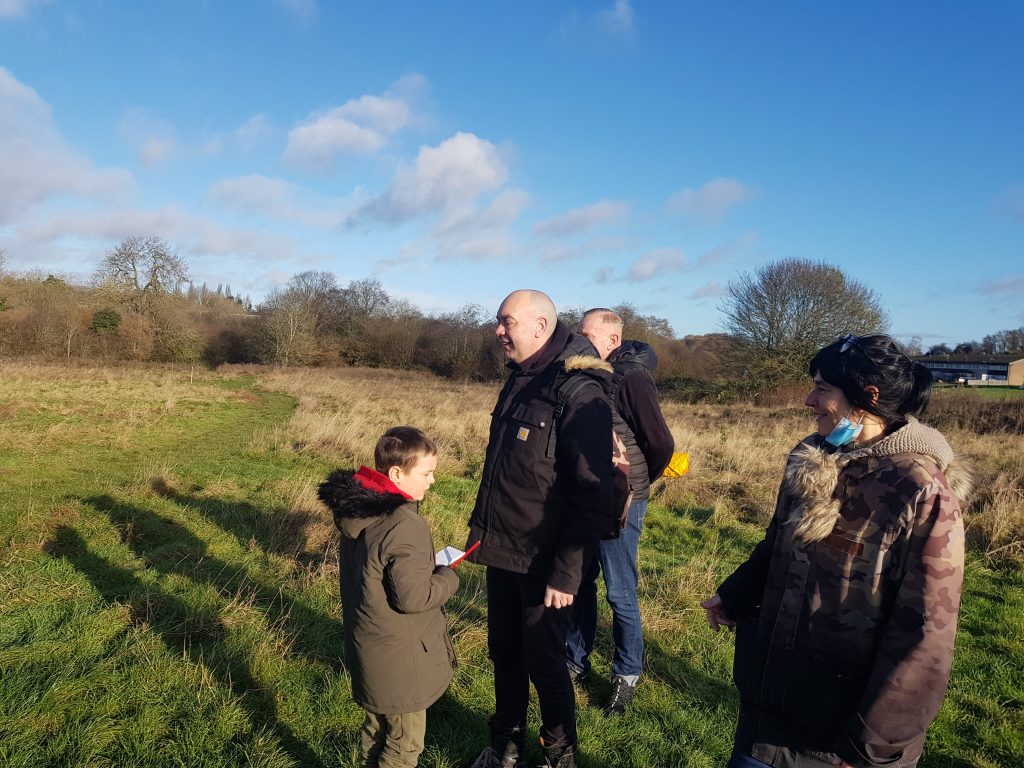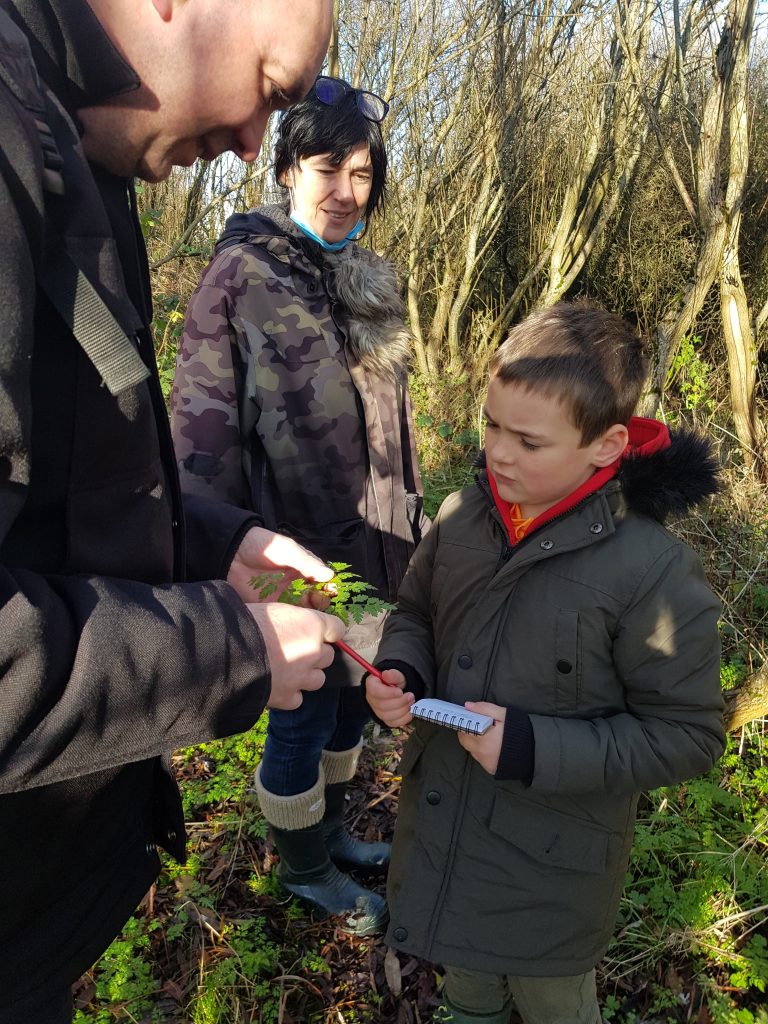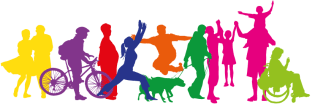We know that spending time in nature, and feeling connected to our surroundings, can have lots of physical and mental health benefits. The Active Wellbeing Society and the Active Communities programme support local organisations, groups, and communities to reimagine and take ownership of green space, so that their wellbeing benefits can be enjoyed more widely.
Recently, we visited the Pathfinders project, funded by Active Communities, at their Pole to Pole event. The project, led by artists Jayne Murray and Emily Warner, creatively maps Druids Heath’s village green and encourages people to explore the space on a ‘pole to pole’ expedition.
Jayne and Emily are part of ‘A Level Playing Field’, an arts and heritage organisation created in 2017, which aims to give people living in areas experiencing high levels of deprivation the chance to use art as a way of expressing themselves. As Jayne explained,
‘It’s about giving people the opportunity to take part in creative projects and to have art as part of your everyday life and environment. The arts are for everyone. It’s not something you should have to travel or pay for.’
Since September, they have been working on the Pathfinders project, which explores the history, nature, and hidden pathways among Druids Heath’s village green. Jayne explained ‘it’s quite a unique space, really, that’s protected for the people, which has seen different changes over the years and also sees no change at all’. In the 1990s, there was a proposal to build on the green space. At the time, there were sixteen tower blocks in the area, meaning many residents didn’t have gardens. A neighbourhood action group fought to keep this patch of green on their doorstep for the community. Following a ten-year legal battle, the village green was granted protected status.
Emily and Jayne have worked with the local community to explore and record the memories, changes, and species within the area. Emily explained,
‘We encountered a visitor who took us on a walk, we walked with Tony, who’s got a long relationship working with park rangers on different projects, and then also a local resident on a dog walk. As well as, you know, mapping and recording what we encountered and experienced.’
Based on their findings, they have created a series of artworks and a short film mapping the historic pathways, waterways, and species within the space, which are showcased in Druids Heath library. They have also produced map leaflets, which they will share with people living in the estate. There are also other visible traces in the area – you can visit the colourful poles dotted around the village green and see their flag within local community spaces, such as the doctors, hairdressers, and Kath’s Café.
The project didn’t want to create set pathways in the green space, but instead encourages you to go from pole to pole exploring the area in your own way. Jayne explained, ‘If you have three colour trails for people to follow, that’s easy and everyone understands that…. there should be more ambiguity and ownership by people through the art of the site’. They said that this approach gives people the freedom to explore the space in their own way and find their own pathways. The artists also believe that it allows people to get closer to, and feel more connected with, nature.
‘If you have to squeeze through a gap, you’ve just got more connection and more engagement with what you’re doing. And it puts you more, much, much more in the moment. And that’s where the wellbeing in the open spaces come from.’ Many recent studies have found that the greatest benefits when spending time in green space comes from feeling connected to your surroundings.
The project and the event have had a big impact through encouraging people to connect with and explore the space. Jayne and Emily explained that ‘quite a few people who we walked with acknowledged how much of a resource the area is’. They also said that the potential for discovery in the wild space empowers people and has lots of wellbeing benefits. It’s enriching to see and learn new things, such as plant species and untrodden paths, while also being active outdoors. As Jayne said, ‘why not get your mind blown unexpectedly while you’re just out for a nice little walk in the sunshine? You can find this crazy stuff growing on a tree that you never knew existed’.
Ravinder Bains, Programme Governance Manager on Active Communities Programme, said that Pathfinders is a wonderful example of the work Active Communities aims to support. He explained,
‘We want to work with residents to see the space around them differently, so that they might form a new relationship with it in ways that can support their wellbeing. Most of all, we want to overcome the barriers that prevent many people from feeling safe and welcome in green space. Through creativity and play, Pathfinders does just that and we’ve loved being a part of it.
We will utilise all the learning from this project and share them across the Active Communities Programme, as well as through our evaluation process to inform our partners in Sport England and other Local Delivery Pilots across England.’
Looking ahead, Jayne and Emily hope to continue working with the community to map species and the space. They are excited about the prospect of a ‘journey down the Chinn Brook tributary’ and the potential to get more young people engaged in nature.
To find out more and stay up to date with the Pathfinders project, follow their Instagram page. To learn more about our Active Communities programme, visit: https://theaws.co.uk/active-communities/.




